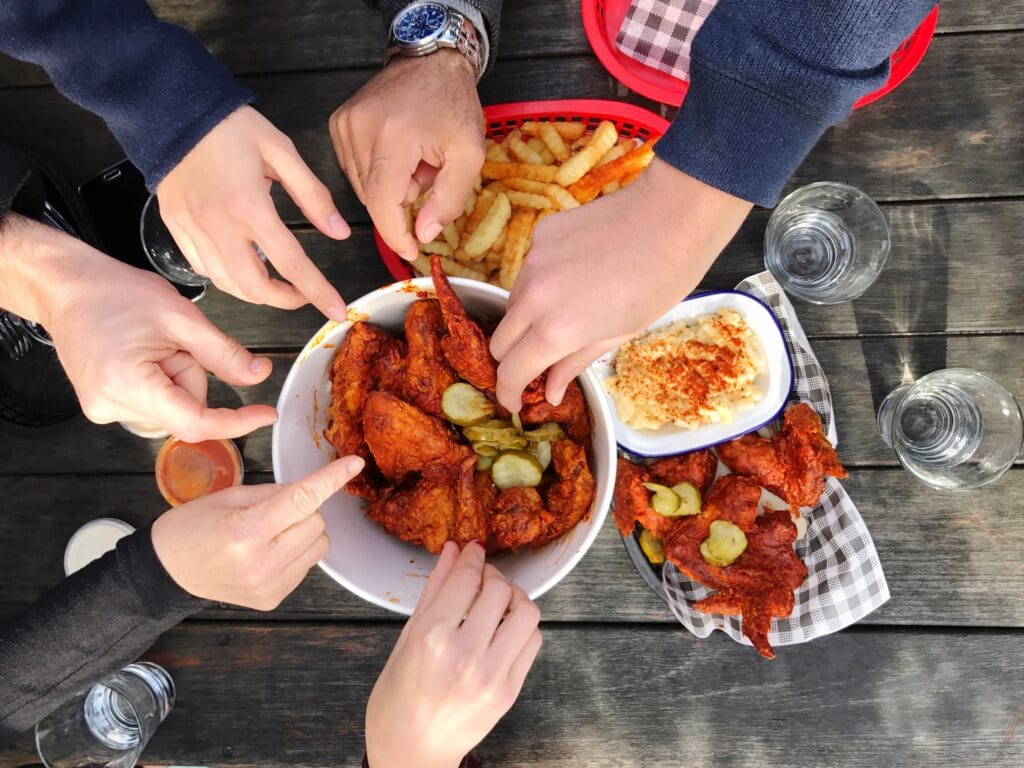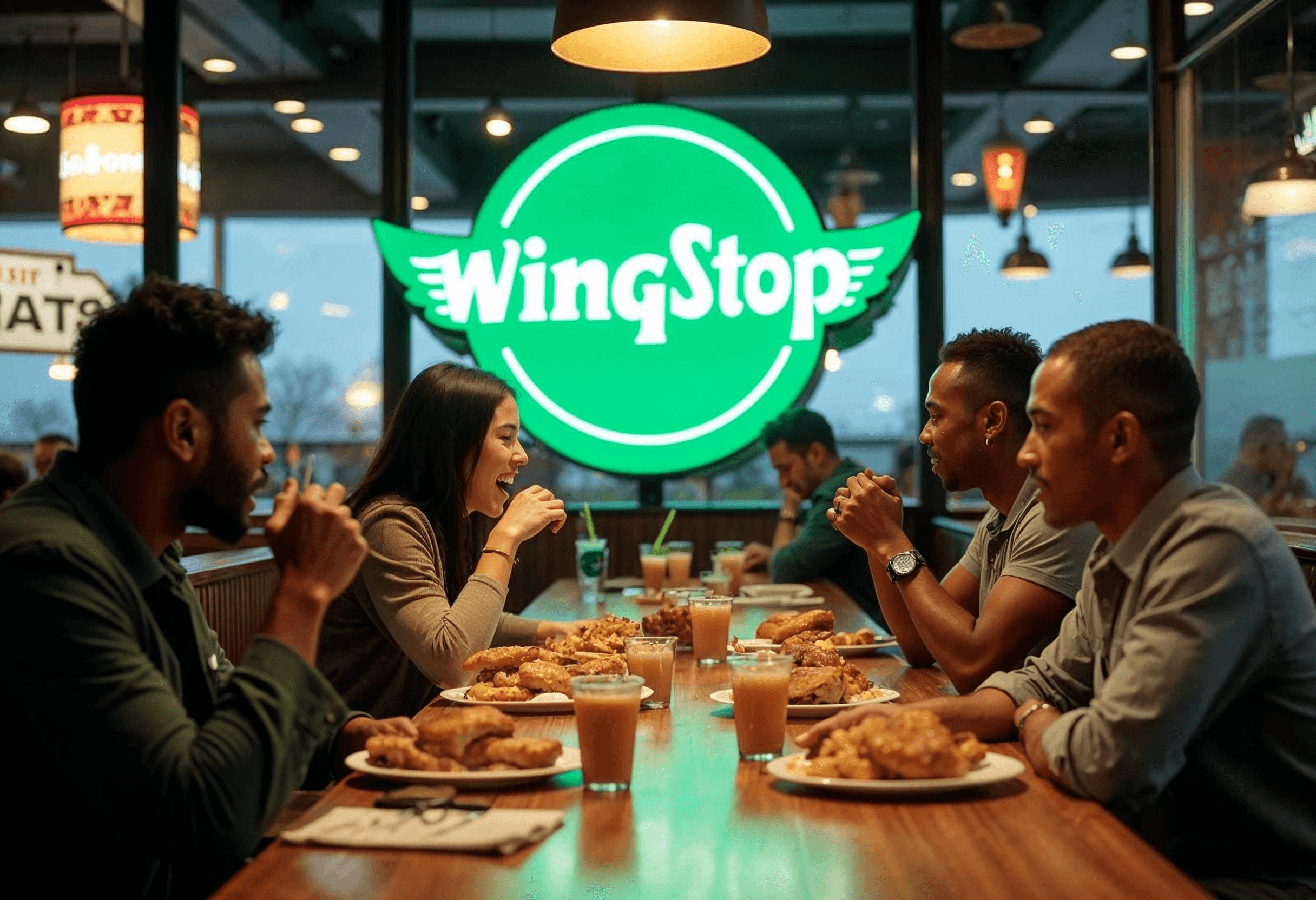Wingstop is one of the most celebrated names in the fast-food industry, renowned for its exceptional chicken wings, bold flavors, and a unique aviation-themed dining atmosphere. Established in 1994, the brand has grown from a single restaurant in Garland, Texas, to an international chain with over 1,500 locations across the globe. Today, Wingstop is not just a restaurant; it’s a destination for wing lovers everywhere.
From its humble beginnings to becoming a publicly traded powerhouse, the story of Wingstop is one of innovation, adaptability, and strategic planning. This article delves into the details of Wingstop’s ownership, the company’s journey, and its role in shaping the fast-casual dining industry.
A Brief History of Wingstop
How Wingstop Took Off
Wingstop was founded in 1994 by Antonio Swad, who envisioned a restaurant dedicated entirely to high-quality chicken wings. The concept revolved around offering customers fresh, made-to-order wings coated in a variety of flavorful sauces and dry rubs. This simple yet effective idea allowed Wingstop to stand out in the crowded fast-food market.
Franchising and Expansion
By 1998, Wingstop had already begun to franchise its operations, which enabled it to scale rapidly. In addition, franchising not only lowered operational costs for the company but also allowed local entrepreneurs to bring Wingstop to their communities. As a result, the franchising model proved to be a significant growth driver, and within just a few years, the chain expanded to hundreds of locations across the United States.
Going Global
After securing its dominance in the U.S. market, Wingstop set its sights on international expansion. Today, the brand operates in markets such as Mexico, Singapore, the United Kingdom, and Indonesia, catering to a global audience with a love for bold, flavorful chicken wings.

Current Ownership: Who Owns Wingstop?
Wingstop as a Publicly Traded Company
Wingstop transitioned to public ownership in June 2015 when it launched its initial public offering (IPO) on the NASDAQ stock exchange under the ticker symbol WING. This marked a significant milestone in the company’s history, as it opened the door for investors worldwide to become part of Wingstop’s success.
Learn more about how publicly traded companies operate and the benefits of investing in one like Wingstop.
Key Shareholders of Wingstop
As a publicly traded entity, Wingstop’s ownership is distributed among numerous institutional and retail investors. Some of the largest stakeholders include major investment firms like The Vanguard Group, BlackRock, and Morgan Stanley Investment Management. These institutional investors play a crucial role in the company’s financial stability and strategic direction.
Leadership’s Role in Ownership
While Wingstop is not owned by a single individual, its executive team and board of directors are instrumental in guiding the company’s growth. The current CEO, Michael Skipworth, along with the leadership team, focuses on enhancing the company’s profitability, innovating its offerings, and expanding its market reach.
Franchise Ownership
It’s important to note that while individual franchisees own and operate the majority of Wingstop’s restaurants, these franchisees are not the owners of the Wingstop brand itself. Instead, they operate under a licensing agreement, benefiting from the company’s established name, operational support, and marketing strategies.
Wingstop’s Revenue and Financial Performance
Financial Growth and Milestones
While individual franchisees operate most Wingstop locations, they don’t own the brand outright. Instead, they benefit from licensing agreements, Wingstop’s marketing resources, and operational support. This franchising model drives growth while maintaining a lean operational structure for the parent company.
For those curious about recreating Wingstop’s flavors at home, explore the Wingstop wings recipe guide for tips on perfecting their signature taste.
Role of Digital Sales
In recent years, digital sales have emerged as a significant revenue stream for Wingstop. Over 60% of the company’s sales now come from online orders and mobile apps. This shift reflects the growing preference for convenience among consumers and Wingstop’s ability to adapt to changing market trends.
Profit Margins and Franchising
The company’s franchising model is a major factor behind its impressive profit margins. By allowing franchisees to shoulder the operational costs of individual locations, Wingstop ensures a steady stream of revenue through royalties and fees. This setup enables the company to focus on scaling its brand without bearing the costs of daily operations.
Wingstop’s Menu: A Flavorful Journey
Signature Flavors
Wingstop’s menu is designed to cater to a wide range of taste preferences. Its 11 signature flavors, ranging from classics like Buffalo and Lemon Pepper to adventurous options like Mango Habanero and Cajun, offer something for everyone. These unique flavors have become a defining feature of the brand, attracting customers who crave variety and quality.
Customizable Options
Customization is another hallmark of Wingstop’s menu. Customers can choose between bone-in wings, boneless wings, or chicken tenders, and pair them with a variety of sides, such as seasoned fries, coleslaw, and veggie sticks. This flexibility allows Wingstop to cater to diverse dietary preferences.
Limited-Time Flavors
To keep its offerings fresh and exciting, Wingstop frequently introduces limited-time flavors and seasonal specials. These promotions not only generate buzz among customers but also encourage repeat visits, boosting sales.
Wingstop’s Influence in the Restaurant Industry
Redefining Fast-Casual Dining
Wingstop has carved a niche for itself in the fast-casual dining sector by combining high-quality food with quick service. Unlike traditional fast-food chains, Wingstop emphasizes freshly prepared meals and bold flavors, appealing to customers seeking both taste and convenience.
Setting Trends in Flavor Innovation
The brand’s commitment to flavor innovation has inspired competitors to expand their menus and experiment with bold tastes. Wingstop’s success proves that a focused menu and quality ingredients can be a winning formula.
Community Engagement
Through initiatives like the Wingstop Foundation, the company supports education and community development projects. These efforts strengthen its brand reputation and demonstrate its commitment to corporate responsibility.

The Role of Technology in Wingstop’s Success
Embracing Digital Innovation
Wingstop has positioned itself as a leader in leveraging technology to enhance the customer experience. The company invested early in digital ordering platforms, allowing customers to place orders through its website and mobile app. These tools are intuitive, user-friendly, and designed for convenience, catering to the growing demand for online and on-the-go dining options.
The Impact of Delivery Partnerships
Wingstop has partnered with leading delivery platforms such as DoorDash and Uber Eats to broaden its accessibility. This collaboration has significantly expanded its reach, especially during the COVID-19 pandemic when delivery demand surged. By integrating third-party services with its own digital ecosystem, Wingstop ensures seamless order fulfillment and customer satisfaction.
Harnessing Data Analytics
To remain competitive, Wingstop uses data analytics to make informed business decisions. By analyzing customer preferences, purchasing habits, and sales trends, the company tailors its marketing campaigns and menu offerings. For example, data-driven insights help identify popular flavors, optimize pricing strategies, and improve inventory management, ensuring that locations are stocked with what customers love most.
Wingstop’s Organizational Structure
Leadership Team Driving Innovation
Wingstop’s leadership team plays a pivotal role in the company’s growth. CEO Michael Skipworth and other executives are responsible for setting strategic goals, overseeing daily operations, and ensuring the company stays aligned with its vision. Under their guidance, Wingstop has maintained its reputation for excellence and innovation.
Decentralized Franchise Model
The franchise-driven structure of Wingstop decentralizes its operations. Franchisees manage individual locations, allowing them to tailor their approach to meet local market demands while adhering to Wingstop’s overarching brand standards. This decentralized model provides flexibility and scalability, enabling rapid expansion across diverse regions.
Training and Support for Franchisees
Wingstop provides robust training programs and operational support for its franchise owners. These resources ensure that every location meets the brand’s high standards for food quality, customer service, and cleanliness. From marketing strategies to technical support, franchisees have access to tools that set them up for success.
Wingstop’s Global Expansion
International Markets
Wingstop’s journey beyond the U.S. began with Mexico, where the brand quickly gained a loyal customer base. It has since expanded into other regions, including the United Kingdom, the Middle East, and Southeast Asia. Each market poses unique challenges, but Wingstop’s universal appeal—bold flavors and customizable options—has helped it resonate with diverse cultures.
Discover how to ensure ranch dressing quality with the helpful guide on identifying bad ranch.
Adapting to Local Tastes
While maintaining its core menu, Wingstop adapts certain aspects of its offerings to align with local preferences. For instance, in Asian markets, it has introduced flavors and sides that cater to regional tastes. This approach allows the brand to maintain its global identity while appealing to local palates.
Growth Opportunities
Wingstop continues to identify regions with high potential for growth, particularly in Asia and Europe. Its franchising model, combined with strategic partnerships, positions the brand to capitalize on these opportunities and extend its global footprint.
Wingstop’s Marketing and Branding
Bold and Memorable Branding
Wingstop’s aviation-themed branding, characterized by its green and white color scheme, sets it apart from competitors. The brand’s messaging emphasizes the “flavor experience,” a concept that resonates deeply with its target audience. This distinctive identity has made Wingstop a household name in the dining industry.
Social Media Engagement
Wingstop has mastered the art of social media marketing. Platforms like Instagram, TikTok, and Twitter are integral to its strategy, allowing the brand to interact directly with customers. From engaging memes to mouthwatering food photography, Wingstop uses these channels to build a community of loyal fans.
Strategic Partnerships
The brand frequently partners with influencers, celebrities, and sports teams to broaden its appeal. For instance, collaborations with figures like rapper Rick Ross, who also owns several Wingstop franchises, have amplified its cultural relevance and attracted younger audiences.
Wingstop’s Competitors and Market Position
Key Competitors
Wingstop operates in a competitive market alongside brands like Buffalo Wild Wings, Popeyes, and KFC. Despite this, Wingstop has carved out a niche for itself by focusing exclusively on chicken wings and complementary offerings.
Differentiating Factors
The company’s extensive menu of flavors and its customizable approach are major differentiators. Wingstop allows customers to personalize their orders to an unparalleled degree, whether they prefer traditional bone-in wings or boneless options with a choice of bold sauces and sides.
Building Customer Loyalty
Wingstop’s loyalty program, Wingstop Rewards, has been instrumental in fostering repeat business. Customers earn points for every purchase, which can be redeemed for free food or exclusive offers. This program enhances customer satisfaction and strengthens brand loyalty.
Corporate Social Responsibility at Wingstop
Community Engagement Through Wingstop Foundation
The Wingstop Foundation focuses on creating positive change in communities by supporting education, youth programs, and workforce development initiatives. By investing in the well-being of its communities, Wingstop reinforces its commitment to social responsibility.
Sustainability Initiatives
Wingstop is taking steps to minimize its environmental impact. Efforts include reducing energy consumption, adopting sustainable packaging, and exploring ways to decrease food waste. These initiatives align with the growing demand for eco-friendly practices among consumers.
Promoting Diversity and Inclusion
As a global brand, Wingstop values diversity and inclusion in its workforce and franchise network. The company actively supports equal opportunities, ensuring that people from all backgrounds can succeed within its system.
Wingstop’s Future Outlook
Enhancing Digital Experiences
Looking ahead, Wingstop plans to continue investing in technology. Initiatives include leveraging artificial intelligence for personalized marketing, optimizing delivery routes, and enhancing mobile app functionality. These advancements aim to create an even smoother customer experience.
Expanding the Menu
To stay ahead of industry trends, Wingstop is exploring new menu innovations, including plant-based options and additional sides. By diversifying its offerings, the company ensures its relevance to evolving customer preferences.
Strengthening Franchise Relationships
Wingstop is committed to supporting its franchisees by providing enhanced training, marketing resources, and operational guidance. This focus on franchisee success ensures consistent quality and continued growth for the brand.
FAQs About Wingstop Ownership
Is Wingstop Owned by a Single Person?
No, Wingstop is not owned by a single individual. The company became publicly traded in 2015 and is owned collectively by shareholders. This includes both institutional investors, like asset management firms, and retail investors who purchase shares on the stock market.
Who Are the Largest Shareholders of Wingstop?
The largest shareholders of Wingstop include institutional investors such as The Vanguard Group, BlackRock, and Morgan Stanley Investment Management. These firms manage large investment portfolios that include Wingstop stock, making them significant stakeholders in the company’s success.
What Role Does the CEO Play in Ownership?
The CEO, currently Michael Skipworth (as of 2023), does not own the company outright but plays a crucial role in its management and strategic direction. The CEO oversees operations and ensures that Wingstop continues to grow and perform well financially.
Can Anyone Own a Part of Wingstop?
Yes, Wingstop is a publicly traded company listed on the NASDAQ under the ticker symbol WING. This means anyone can buy shares of the company and own a portion of it, becoming a shareholder.
Do Franchise Owners Own Wingstop?
Franchise owners operate individual Wingstop locations under a licensing agreement. While they own and manage their specific locations, they do not own the Wingstop brand itself. Franchisees pay royalties and fees to use the Wingstop name, systems, and marketing resources.
How Has Public Ownership Benefited Wingstop?
Going public has allowed Wingstop to raise capital, expand globally, and invest in technological innovations. Public ownership also brings transparency and accountability, ensuring the company operates efficiently and remains competitive in the market.
Conclusion
Wingstop’s rise from a single restaurant in Texas to a globally recognized fast-casual dining brand is a testament to its visionary leadership, innovative strategies, and dedication to quality. As a publicly traded company, Wingstop is owned collectively by shareholders, with institutional investors holding significant stakes. Its franchising model, digital transformation, and focus on bold flavors have made it a leader in the competitive restaurant industry.
Despite facing challenges such as market competition and supply chain disruptions, Wingstop continues to grow, innovate, and adapt to changing consumer preferences. Moreover, the company’s ambitious plans for global expansion, combined with its strong commitment to sustainability, paint a promising picture for its future.
Whether you’re a devoted fan of their Lemon Pepper wings or simply intrigued by their impressive business model, Wingstop’s journey serves as an inspiring example of how passion and strategy can create a lasting impact in the food industry. Furthermore, the next time you indulge in a plate of their flavorful wings, you’ll have a deeper appreciation for the story behind the brand. After all, Wingstop isn’t just about great food—it’s about ingenuity, resilience, and a dedication to serving people in the best way possible.

